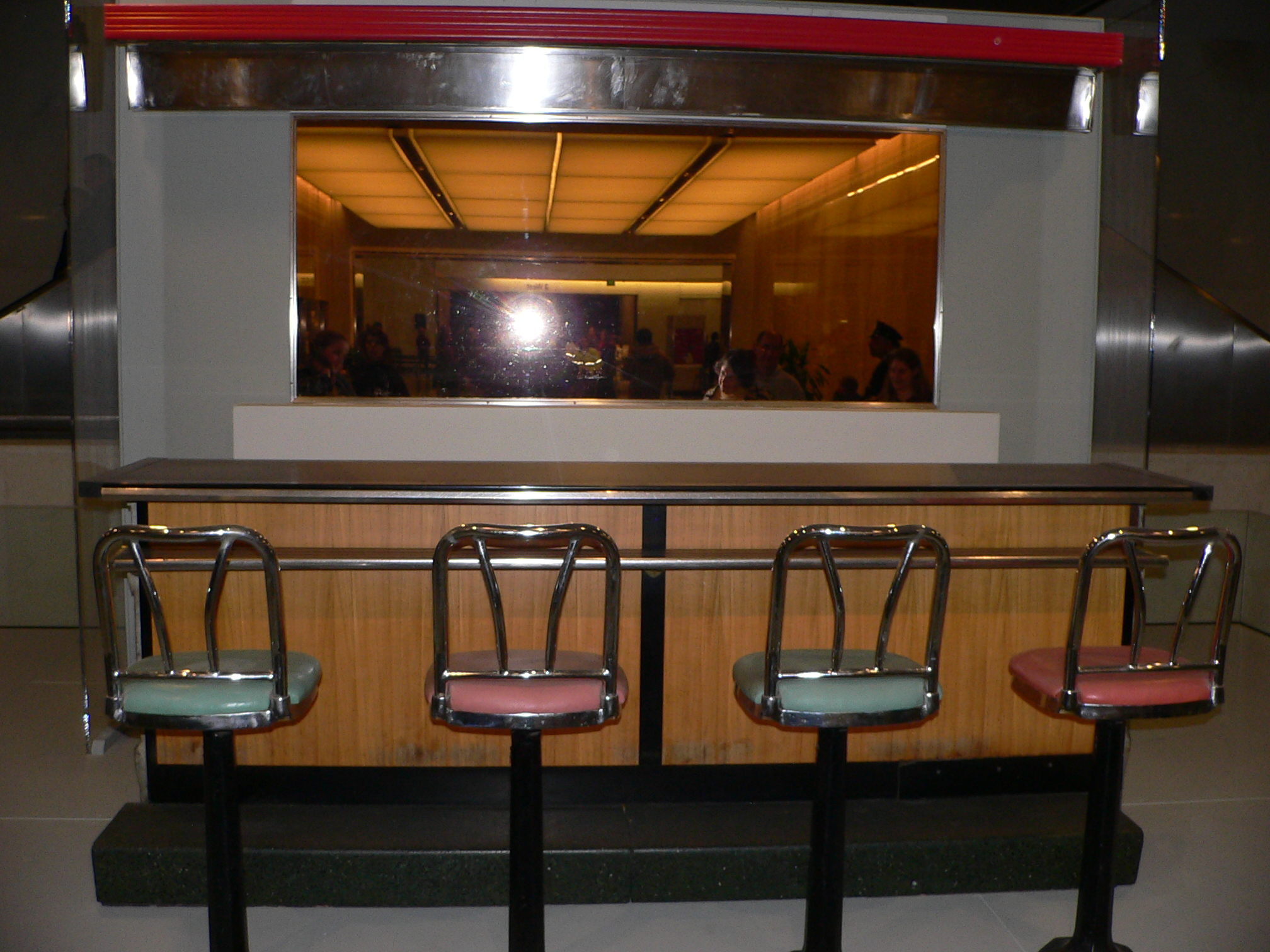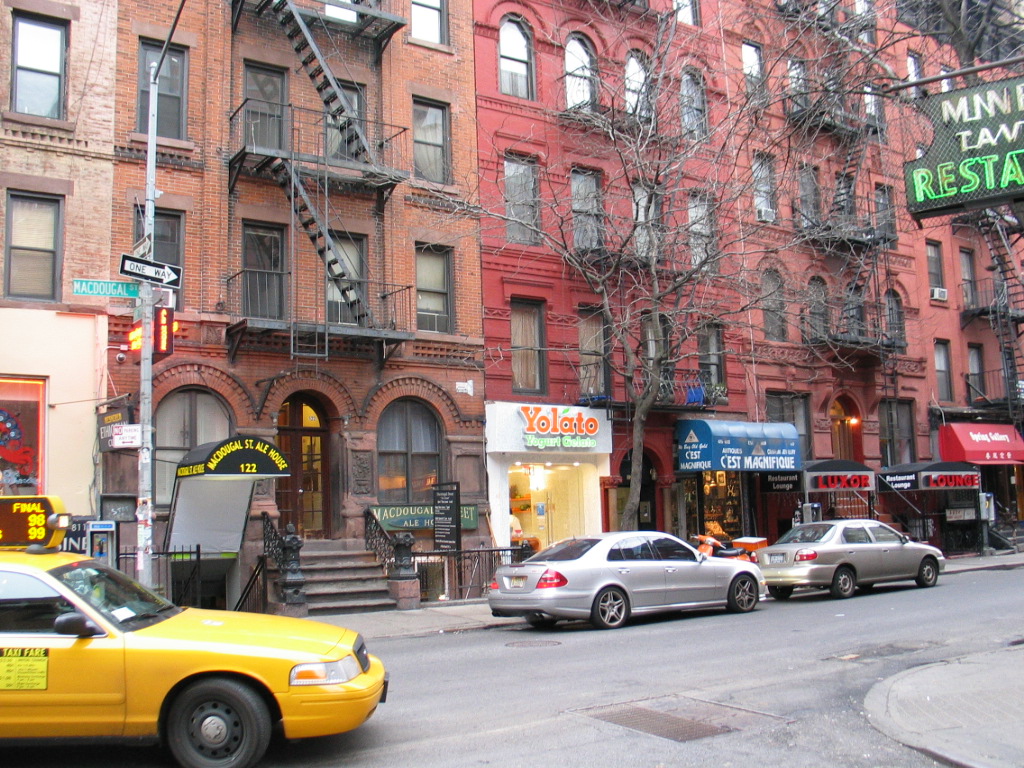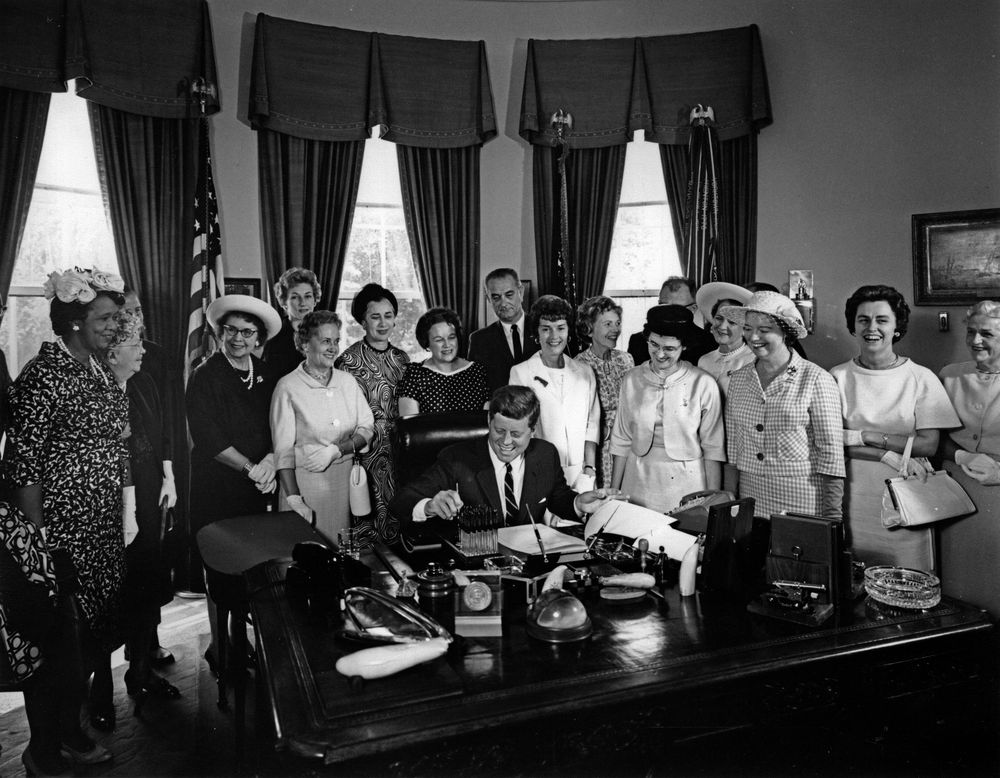|
Dolores Alexander
Dolores Alexander (August 10, 1931 – May 13, 2008) was a lesbian feminist, writer, and reporter. Alexander was the only executive director of the National Organization for Women (NOW) to have resigned because of the homophobic beliefs in the early inception of NOW. She co-opened the feminist restaurant "Mother Courage" with Jill Ward. Until her death, in 2008, she continued to believe in the need for the women's rights movement in contemporary times, stating that "It's bigotry, and I don't know if you can eliminate it". Early life and career Dolores Alexander was born in Newark, New Jersey, where she attended Catholic school. In 1961 she graduated from City College of New York with a Bachelor of Arts in Language and Literature. During her senior year she worked at ''The New York Times'' as an intern reporter for 10 months, gaining experience in journalism and her first taste of sexism within the news field: while applying for positions at the ''Times'', she was not hired as ... [...More Info...] [...Related Items...] OR: [Wikipedia] [Google] [Baidu] |
Newark, New Jersey
Newark ( , ) is the most populous city in the U.S. state of New Jersey and the seat of Essex County and the second largest city within the New York metropolitan area.New Jersey County Map . Accessed July 10, 2017. The city had a population of 311,549 as of the , and was calculated at 307,220 by the |
Jacqueline Ceballos
Jacqueline "Jacqui" Michot Ceballos (born September 8, 1925) is an American feminist and activist. Ceballos is the former president of New York Chapter of the National Organization for Women and founder of the Veteran Feminists of America organization which documents the history of Second wave feminism and pioneer feminists.Love, Barbara J.''Feminists who changed America, 1963-1975'' University of Illinois Press, 2006, p78, Mead, Rebecca"Changes" ''The New Yorker'', May 3, 2004 Ceballos' 1971 debate on sexual politics with Norman Mailer and Germaine Greer is recorded in the 1979 film ''Town Bloody Hall''. Ceballos is also featured in the feminist history film '' She's Beautiful When She's Angry''. Early life Ceballos was born Jacqueline Michot in Mamou, Louisiana on September 8, 1925. The daughter of Louis Michot and Adele Domas, Ceballos was the middle child of seven children. She attended public school in Lafayette and studied music at Southwestern Louisiana Institute. Aft ... [...More Info...] [...Related Items...] OR: [Wikipedia] [Google] [Baidu] |
Venus Symbol
A planet symbol (or ''planetary symbol'') is a graphical symbol used in astrology and astronomy to represent a classical planet (including the Sun and the Moon) or one of the modern planets. The symbols were also used in alchemy to represent the metals associated with the planets, and in calendars for their associated days. The use of these symbols derives from Classical Greco-Roman astronomy, though their current shapes are a development of the 16th century. The classical planets, their symbols, days and most commonly associated planetary metals are: The International Astronomical Union (IAU) discourages the use of these symbols in modern journal articles, and their style manual proposes one- and two-letter abbreviations for the names of the planets for cases where planetary symbols might be used, such as in the headings of tables. The modern planets with their traditional symbols and IAU abbreviations are: The symbols of Venus and Mars are also used to represent female and ... [...More Info...] [...Related Items...] OR: [Wikipedia] [Google] [Baidu] |
Luncheonette
A lunch counter (also known as a luncheonette) is, in the US, a small restaurant, similar to a diner, where the patron sits on a stool on one side of the counter and the server or person preparing the food serves from the opposite side of the counter, where the kitchen or limited food preparation area is located. As the name suggests, they were primarily used for the lunch meal. Lunch counters were once commonly located inside retail variety stores ("five and dimes" or "five and tens" as they were called in the United States) and smaller department stores. The intent of the lunch counter in a store was to profit from serving hungry shoppers, and to attract people to the store so that they might buy merchandise. History Woolworth's, an early five and dime chain of stores, opened their first luncheonette in New Albany, Indiana, around 1923, and expanded rapidly from there.Barksdale, David C. & Sekula, Robyn Davis (2005) ''New Albany in Vintage Postcards,'' p. 2 Lunch counters ... [...More Info...] [...Related Items...] OR: [Wikipedia] [Google] [Baidu] |
Bertolt Brecht
Eugen Berthold Friedrich Brecht (10 February 1898 – 14 August 1956), known professionally as Bertolt Brecht, was a German theatre practitioner, playwright, and poet. Coming of age during the Weimar Republic, he had his first successes as a playwright in Munich and moved to Berlin in 1924, where he wrote '' The Threepenny Opera'' with Kurt Weill and began a life-long collaboration with the composer Hanns Eisler. Immersed in Marxist thought during this period, he wrote didactic ''Lehrstücke'' and became a leading theoretician of epic theatre (which he later preferred to call "dialectical theatre") and the . During the Nazi Germany period, Brecht fled his home country, first to Scandinavia, and during World War II to the United States, where he was surveilled by the FBI. After the war he was subpoenaed by the House Un-American Activities Committee. Returning to East Berlin after the war, he established the theatre company Berliner Ensemble with his wife and long-time col ... [...More Info...] [...Related Items...] OR: [Wikipedia] [Google] [Baidu] |
Mother Courage
Mother Courage (German ''Mutter Courage'') is a character from a Grimmelshausen novel ''Lebensbeschreibung der Ertzbetrügerin und Landstörtzerin Courasche'' (''The Runagate Courage'') dating from around 1670. The character had played a cameo role in '' Der abentheuerliche Simplicissimus'' in 1669. The Bertolt Brecht play ''Mutter Courage und ihre Kinder'' (''Mother Courage and Her Children ''Mother Courage and Her Children'' (german: Mutter Courage und ihre Kinder, links=no) is a play written in 1939 by the German dramatist and poet Bertolt Brecht (1898–1956), with significant contributions from Margarete Steffin. Four theatrica ...'') gave her currency in the 20th century. Mother Courage is cast as a walking contradiction by Brecht. She is torn between protecting her children from the war and making a profit out of the war. Cúruisce (Courasche) appears in Ireland as a fictional character in Darach Ó Scolaí's Irish language novel '' An Cléireach''. After travel ... [...More Info...] [...Related Items...] OR: [Wikipedia] [Google] [Baidu] |
Greenwich Village
Greenwich Village ( , , ) is a neighborhood on the west side of Lower Manhattan in New York City, bounded by 14th Street to the north, Broadway to the east, Houston Street to the south, and the Hudson River to the west. Greenwich Village also contains several subsections, including the West Village west of Seventh Avenue and the Meatpacking District in the northwest corner of Greenwich Village. Its name comes from , Dutch for "Green District". In the 20th century, Greenwich Village was known as an artists' haven, the bohemian capital, the cradle of the modern LGBT movement, and the East Coast birthplace of both the Beat and '60s counterculture movements. Greenwich Village contains Washington Square Park, as well as two of New York City's private colleges, New York University (NYU) and The New School. Greenwich Village is part of Manhattan Community District 2, and is patrolled by the 6th Precinct of the New York City Police Department. Greenwich Village has underg ... [...More Info...] [...Related Items...] OR: [Wikipedia] [Google] [Baidu] |
Mother Courage Cake
] A mother is the female parent of a child. A woman may be considered a mother by virtue of having given birth, by raising a child who may or may not be her biological offspring, or by supplying her ovum for fertilisation in the case of gestational surrogacy. An adoptive mother is a female who has become the child's parent through the legal process of adoption. A biological mother is the female genetic contributor to the creation of the infant, through sexual intercourse or egg donation. A biological mother may have legal obligations to a child not raised by her, such as an obligation of monetary support. A putative mother is a female whose biological relationship to a child is alleged but has not been established. A stepmother is a woman who is married to a child's father and they may form a family unit, but who generally does not have the legal rights and responsibilities of a parent in relation to the child. A father is the male counterpart of a mother. Women who are pr ... [...More Info...] [...Related Items...] OR: [Wikipedia] [Google] [Baidu] |
Fourth World Conference On Women
The Fourth World Conference on Women: Action for Equality, Development and Peace was the name given for a conference convened by the United Nations during 4–15 September 1995 in Beijing, China. At this conference, governments from around the world agreed on a comprehensive plan to achieve global legal equality, known as the Beijing Platform for Action. Background The founding United Nations charter (1945) included a provision for equality between men and women ( chapter III, article 8). Subsequently, from 1945 to 1975 various female officials within the United Nations and leaders of women's movements on the global stage attempted to turn these principles into action. The United Nations General Assembly passed a resolution ( resolution 3010) that 1975 should be International Women's Year. In December 1975, the UN General Assembly passed a further resolution ( resolution 31/136) that 1976–1985 should be the "Decade of Women". First World Conference on Women, Mexico City, ... [...More Info...] [...Related Items...] OR: [Wikipedia] [Google] [Baidu] |
National Women's Conference
The National Women's Conference of 1977 was a four-day event during November 18–21, 1977, as organized by the National Commission on the Observance of International Women's Year. The conference drew around, 2,000 delegates along with 15,000-20,000 observers in Houston, Texas. The United States Congress approved $5 million in public appropriations for both the state and national conferences as HR 9924, sponsored by Congresswoman Patsy Mink, which Ford signed into law. In 1977 at the start of his presidency, President Jimmy Carter chose a new Commission and appointed Congresswoman Bella Abzug to head it. Numerous events were held over the next two years, culminating in the National Women's Conference. The conference represents a turning point for the political history of second-wave feminism in the United States. A number of controversial issues, including abortion rights and sexual orientation, were flashpoints in the event's program. Historian Marjorie J. Spruill argues that the ... [...More Info...] [...Related Items...] OR: [Wikipedia] [Google] [Baidu] |
Second-wave Feminism
Second-wave feminism was a period of feminist activity that began in the early 1960s and lasted roughly two decades. It took place throughout the Western world, and aimed to increase equality for women by building on previous feminist gains. Whereas first-wave feminism focused mainly on suffrage and overturning legal obstacles to gender equality (''e.g.'', voting rights and property rights), second-wave feminism broadened the debate to include a wider range of issues: sexuality, family, domesticity, the workplace, reproductive rights, ''de facto'' inequalities, and official legal inequalities. It was a movement that was focused on critiquing the patriarchal, or male-dominated, institutions and cultural practices throughout society. Second-wave feminism also drew attention to the issues of domestic violence and marital rape, created rape-crisis centers and women's shelters, and brought about changes in custody laws and divorce law. Feminist-owned bookstores, credit unions ... [...More Info...] [...Related Items...] OR: [Wikipedia] [Google] [Baidu] |
New York Newspaper Women's Club
The Newswomen's Club of New York is a nonprofit organization that focuses on women working in the media in the New York City metropolitan area. Founded in 1922 as the New York Newspaper Woman's Club, it included Eleanor Roosevelt, Helen Rogers Reid and Anne O'Hare McCormick among its membership; it changed its name in 1971 to include members working in magazines and broadcast media. The organization presents its Front Page Award annually to honor the most prominent achievements by women in journalism. History American newspapers hired large numbers of female journalists in 1919–1920 to cover the women's suffrage movement, but after the passage of the Nineteenth Amendment, many were demoted to the society pages or let go. This led several women to plan a group that would fight for the rights of female journalists. The New York Newspaper Women's Club was started by 32 women who met at the Hotel Vanderbilt on March 8, 1922, and formally began two weeks later with the swearing in ... [...More Info...] [...Related Items...] OR: [Wikipedia] [Google] [Baidu] |


_1988%2C_MiNr_Block_091.jpg)

.jpg)


